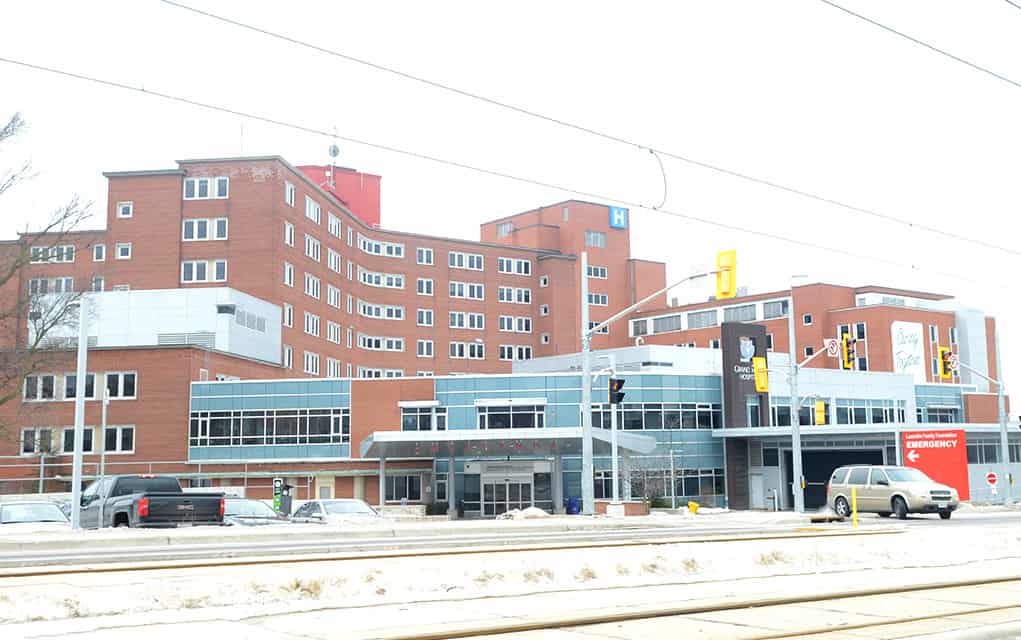The region’s townships have a shot at new infrastructure funding under a joint municipal-provincial-federal program announced this week. Road and bridge projects in rural and northern communities are part of the first phase of a 10-year, $30-billion funding model.
Provincial Infrastructure Minister Monte McNaughton made the announcement at the Wilmot municipal office in Baden on Tuesday morning alongside a group that included regional chair Karen Redman, Wellesley Mayor Joe Nowak and Kitchener-Conestoga MPP Mike Harris.
“This investment will improve the lives of the people across Ontario,” said McNaughton during Tuesday’s announcement. “It will make our roads safer, our commutes easier, and our communities healthier. It will also create and sustain local jobs – good jobs – in your communities.”
The first stream of funding applies to cities and Indigenous communities with populations under 100,000, which means Woolwich (25,000) and Wellesley (11,260) qualify. These townships, along with some 500 other eligible cities in the province, will have eight weeks beginning March 18 to nominate road, bridge, air or marine infrastructure projects.
“So if you’re one of the eligible communities, my message to you is simple: get out your laptop,” said McNaughton. “You have eight weeks to submit your project to our ‘one-window’ web portal on the Grants Ontario website.”
Under the provincial plan, all of the processes will be done in one place, including handling application intake, review, nomination, reporting and transferring payment.
The intake period will end around mid-May, giving enough time to review appropriate projects and to move forward with the nomination.
Municipal leaders have long advocated for a guaranteed funding model for these types of projects rather than an application process. While this program does not necessarily ensure money, local leaders are confident that it will still pay off.
“It was good to hear that the monies will be spread over ten years. While there is no guarantee that we would have a successful bid, it gives staff the opportunity to prioritize projects and reapply if need be,” said Nowak.
The township is currently looking at a list of potential projects, he noted.
“Our road and bridge infrastructure is in reasonably good condition for now,” said Nowak. “Staff is reviewing our capital plan to see what might qualify in the near future. I think that anytime there is a significant investment in infrastructure for smaller rural communities, we must be encouraged by the fact that the province has listened to our concerns.
“Also, the timing of the announcement allows for municipalities to take advantage of this year’s construction season. All in all, a very positive development.”
For Ottawa’s share, the funding falls under the Investing in Canada Infrastructure program. Ontario’s share per project will be up to 33 per cent, or $10.2 billion spread across four phases, with the rural and northern the first of the four. The second will be aimed at public transit projects, the third will be for green initiatives, and the fourth and final phase geared towards community, culture and recreation.
“I’m really excited to see a renewed focused on rural and northern infrastructure,” said Harris in a statement. “Growing up in a rural community, I understand how core investments in roads and bridges help promote economic growth. Therefore, our government’s 10-year investment will elevate our region’s rural townships and ensure they will participate in a province truly open for business.”









